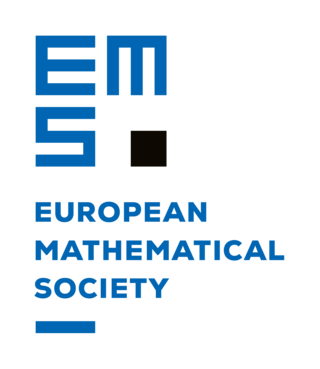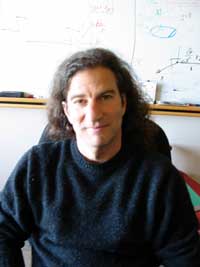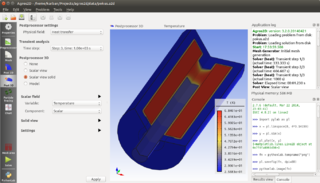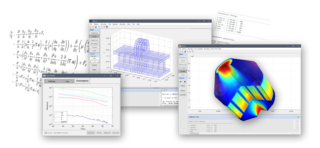Related Research Articles

Computational fluid dynamics (CFD) is a branch of fluid mechanics that uses numerical analysis and data structures to analyze and solve problems that involve fluid flows. Computers are used to perform the calculations required to simulate the free-stream flow of the fluid, and the interaction of the fluid with surfaces defined by boundary conditions. With high-speed supercomputers, better solutions can be achieved, and are often required to solve the largest and most complex problems. Ongoing research yields software that improves the accuracy and speed of complex simulation scenarios such as transonic or turbulent flows. Initial validation of such software is typically performed using experimental apparatus such as wind tunnels. In addition, previously performed analytical or empirical analysis of a particular problem can be used for comparison. A final validation is often performed using full-scale testing, such as flight tests.
In the mathematical study of differential equations, the Dirichletboundary condition is a type of boundary condition, named after Peter Gustav Lejeune Dirichlet (1805–1859). When imposed on an ordinary or a partial differential equation, it specifies the values that a solution needs to take along the boundary of the domain.
In mathematics and its applications, particularly to phase transitions in matter, a Stefan problem is a particular kind of boundary value problem for a system of partial differential equations (PDE), in which the boundary between the phases can move with time. The classical Stefan problem aims to describe the evolution of the boundary between two phases of a material undergoing a phase change, for example the melting of a solid, such as ice to water. This is accomplished by solving heat equations in both regions, subject to given boundary and initial conditions. At the interface between the phases the temperature is set to the phase change temperature. To close the mathematical system a further equation, the Stefan condition, is required. This is an energy balance which defines the position of the moving interface. Note that this evolving boundary is an unknown (hyper-)surface; hence, Stefan problems are examples of free boundary problems.

The European Mathematical Society (EMS) is a European organization dedicated to the development of mathematics in Europe. Its members are different mathematical societies in Europe, academic institutions and individual mathematicians. The current president is Jan Philip Solovej, professor at the Department of Mathematics at the University of Copenhagen.

Level-set methods (LSM) are a conceptual framework for using level sets as a tool for numerical analysis of surfaces and shapes. The advantage of the level-set model is that one can perform numerical computations involving curves and surfaces on a fixed Cartesian grid without having to parameterize these objects. Also, the level-set method makes it very easy to follow shapes that change topology, for example, when a shape splits in two, develops holes, or the reverse of these operations. All these make the level-set method a great tool for modeling time-varying objects, like inflation of an airbag, or a drop of oil floating in water.
Numerical methods for partial differential equations is the branch of numerical analysis that studies the numerical solution of partial differential equations (PDEs).
Heinz-Otto Kreiss was a German mathematician in the fields of numerical analysis, applied mathematics, and what was the new area of computing in the early 1960s. Born in Hamburg, Germany, he earned his Ph.D. at Kungliga Tekniska Högskolan in 1959. Over the course of his long career, Kreiss wrote a number of books in addition to the purely academic journal articles he authored across several disciplines. He was professor at Uppsala University, California Institute of Technology and University of California, Los Angeles (UCLA). He was also a member of the Royal Swedish Academy of Sciences. At the time of his death, Kreiss was a Swedish citizen, living in Stockholm. He died in Stockholm in 2015, aged 85.

James Albert Sethian is a professor of mathematics at the University of California, Berkeley and the head of the Mathematics Group at the United States Department of Energy's Lawrence Berkeley National Laboratory.

Fluid–structure interaction (FSI) is the interaction of some movable or deformable structure with an internal or surrounding fluid flow. Fluid–structure interactions can be stable or oscillatory. In oscillatory interactions, the strain induced in the solid structure causes it to move such that the source of strain is reduced, and the structure returns to its former state only for the process to repeat.

In the field of numerical analysis, meshfree methods are those that do not require connection between nodes of the simulation domain, i.e. a mesh, but are rather based on interaction of each node with all its neighbors. As a consequence, original extensive properties such as mass or kinetic energy are no longer assigned to mesh elements but rather to the single nodes. Meshfree methods enable the simulation of some otherwise difficult types of problems, at the cost of extra computing time and programming effort. The absence of a mesh allows Lagrangian simulations, in which the nodes can move according to the velocity field.
Computational magnetohydrodynamics (CMHD) is a rapidly developing branch of magnetohydrodynamics that uses numerical methods and algorithms to solve and analyze problems that involve electrically conducting fluids. Most of the methods used in CMHD are borrowed from the well established techniques employed in Computational fluid dynamics. The complexity mainly arises due to the presence of a magnetic field and its coupling with the fluid. One of the important issues is to numerically maintain the (conservation of magnetic flux) condition, from Maxwell's equations, to avoid the presence of unrealistic effects, namely magnetic monopoles, in the solutions.
In the numerical solution of partial differential equations, a topic in mathematics, the spectral element method (SEM) is a formulation of the finite element method (FEM) that uses high degree piecewise polynomials as basis functions. The spectral element method was introduced in a 1984 paper by A. T. Patera. Although Patera is credited with development of the method, his work was a rediscovery of an existing method

In computational fluid dynamics, the volume of fluid (VOF) method is a free-surface modelling technique, i.e. a numerical technique for tracking and locating the free surface. It belongs to the class of Eulerian methods which are characterized by a mesh that is either stationary or is moving in a certain prescribed manner to accommodate the evolving shape of the interface. As such, VOF is an advection scheme—a numerical recipe that allows the programmer to track the shape and position of the interface, but it is not a standalone flow solving algorithm. The Navier–Stokes equations describing the motion of the flow have to be solved separately. The same applies for all other advection algorithms.

The finite element method (FEM) is a popular method for numerically solving differential equations arising in engineering and mathematical modeling. Typical problem areas of interest include the traditional fields of structural analysis, heat transfer, fluid flow, mass transport, and electromagnetic potential.
Bertil Gustafsson is a Swedish applied mathematician and numerical analyst. He is currently a Professor emeritus in the Department of Information Technology at Uppsala University, Sweden. Gustafsson is known for his work in numerical methods for time-dependent partial differential equations and its applications in fluid dynamics. He is the G in GKS (Gustafsson–Kreiss–Sundstrom) theory for initial-boundary value problems which discusses the stability criterion for numerical approximations of initial–boundary value problems. Gustafsson has also authored a couple of books on the topic numerical methods applied to PDE.

Agros2D is an open-source code for numerical solutions of 2D coupled problems in technical disciplines. Its principal part is a user interface serving for complete preprocessing and postprocessing of the tasks. The processor is based on the library Hermes containing the most advanced numerical algorithms for monolithic and fully adaptive solution of systems of generally nonlinear and nonstationary partial differential equations (PDEs) based on hp-FEM. Both parts of the code are written in C++.

FEATool Multiphysics is a physics, finite element analysis (FEA), and partial differential equation (PDE) simulation toolbox. FEATool Multiphysics features the ability to model fully coupled heat transfer, fluid dynamics, chemical engineering, structural mechanics, fluid-structure interaction (FSI), electromagnetics, as well as user-defined and custom PDE problems in 1D, 2D (axisymmetry), or 3D, all within a graphical user interface (GUI) or optionally as script files. FEATool has been employed and used in academic research, teaching, and industrial engineering simulation contexts.
Gunilla Kreiss is a Swedish applied mathematician and numerical analyst specializing in level-set methods and numerical methods for partial differential equations, especially for problems arising in fluid dynamics including two-phase flow, shear flow, and Burgers' equation. She is professor of numerical analysis in the Department of Information Technology, Division of Scientific Computing at Uppsala University, and editor-in-chief of BIT Numerical Mathematics.
Gunilla Borgefors is a Swedish computer scientist specializing in image processing, including distance transforms, topological skeletonization, and edge detection. She is a professor emerita in the Department of Information Technology at Uppsala University, associated with the Centre for Image Analysis.
References
- 1 2 3 Timon, Ágata (July 20, 2016), "Me gusta resolver problemas matemáticos del mundo real: Sara Zahedi, del Royal Institute of Technology (Suecia), ganadora del premio EMS a matemáticos jóvenes", El Mundo (in Spanish).
- 1 2 3 Prize laureates, 7th Eur. Congress of Mathematics, July 18–22, 2016, retrieved 2016-07-26.
- ↑ Burman, Erik; Claus, Susanne; Hansbo, Peter; Larson, Mats G.; Massing, André (December 2014), "CutFEM: Discretizing geometry and partial differential equations" (PDF), International Journal for Numerical Methods in Engineering, 104 (7): 472–501, Bibcode:2015IJNME.104..472B, doi: 10.1002/nme.4823 .
- 1 2 "A refugee's story: 'Math was a language I understood'", Don't call me a prodigy: the rising stars of European mathematics, Deutsche Welle, July 18, 2016, retrieved 2016-07-26.
- ↑ Numerical Methods for Fluid Interface Problems, dissertations.se, retrieved 2016-07-26.
